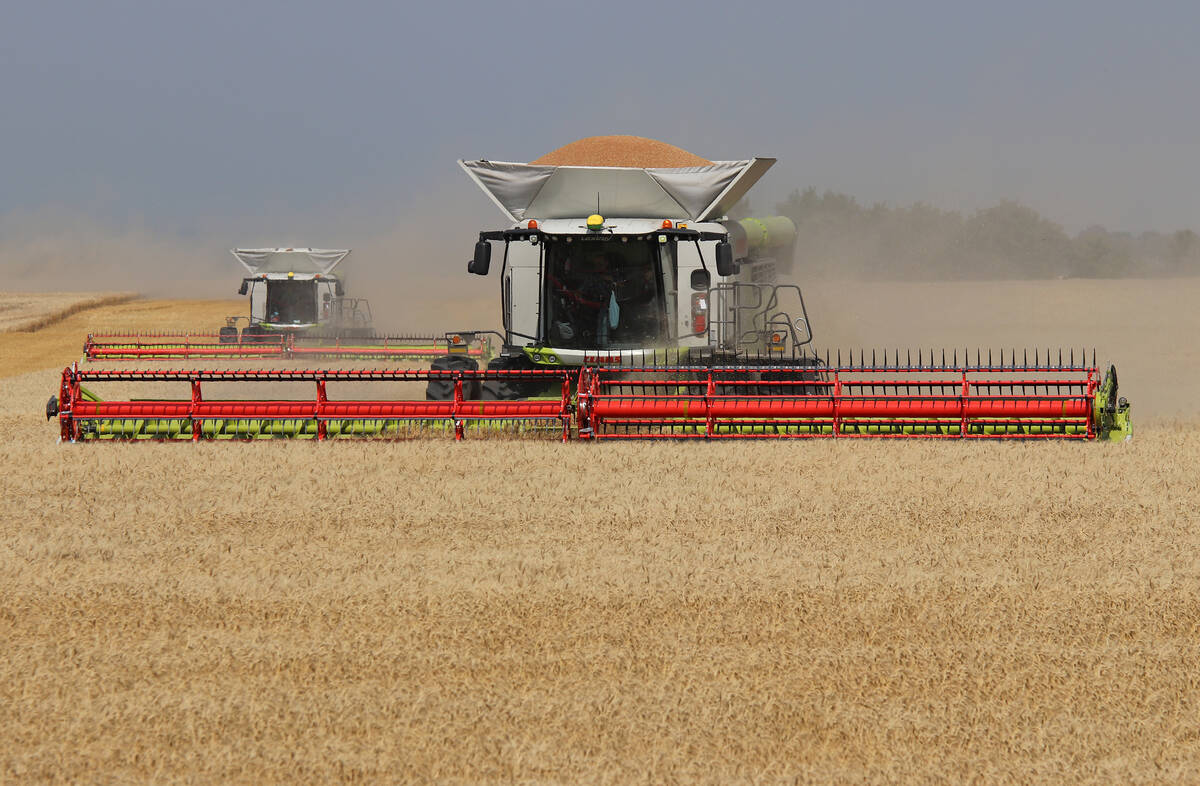While crop production prospects in our nearest competitor, the United States, appear to be great, weather has not been so kind in other parts of the world.
The outlook for a huge American crop has weakened grain prices, but the outlook for Canada’s crop exports in 2024-25 will also be affected by harvests in Europe, Argentina and Australia.
In Europe, excessive rain in France and Germany and hot temperatures in Italy lowered production. Crop harvests are mostly complete and exports to the rest of the world will be down.
Read Also

China’s grain imports have slumped big-time
China purchased just over 20 million tonnes of wheat, corn, barley and sorghum last year, that is well below the 60 million tonnes purchased in 2021-22.
On Aug. 9, the European Commission pegged the usable soft wheat harvest at 116.1 million tonnes, down from 120.8 million forecast in July and a four-year low.
The commission sees the durum crop at 6.86 million tonnes, a multi decade low. In July it had expected seven million tonnes, about the same as last year.
The EC expects durum imports to rise to about three million tonnes from 2.5 million last year.
European Union durum exports outside the bloc are expected to be 715,000 tonnes, down from 1.03 million tonnes last year.
This should mean that Canada will be able to export more durum to Europe and should face less competition in North Africa.
However, it won’t be a joy ride. In the last two years Turkey, and to a lesser extent Russia, have become competitors in the global durum market.
Europe’s weather challenges also provide a modest potential to increase Canadian canola exports.
The commission expects the European rapeseed harvest will be 18.01 million tonnes, down from 19.72 million tonnes last year.
It sees rapeseed imports at 5.86 million tonnes, up from 5.46 million last year, an increase of 400,000 tonnes.
Ukraine, which harvested a smaller rapeseed crop at about 3.5 million tonnes, down one million, will likely be able to supply less rapeseed than last year.
However, Russia’s rapeseed crop is bigger. Private analysts say the crop could be as high as five million tonnes, up from 4.2 million last year.
Russia had banned rapeseed exports, preferring to have its crushing industry process the crop and supply meal to its livestock. It did, however, allow rapeseed oil exports, which totalled around 1.7 million tonnes last year, mostly going to China. That was up from less than 500,000 tonnes in 2019.
This year, Russia replaces the seed export ban with a duty of 30 per cent and so will likely continue to have an emphasis on exporting oil rather than seed.
The Australian Department of Agriculture and Fisheries said in June that it expected growers would reduce canola area to 7.9 million acres, down nine percent from last year. Dry weather at seeding and weaker prices were behind the decrease. Farmers shifted acres to wheat, barley and pulses.
Indeed, the dry seeding period in the Southern Hemisphere autumn had Australian growers, particularly in Western Australia, on edge. However, as the winter progresses, rain has improved, especially in eastern areas.
Last week, the Australian Oilseeds Federation released its first forecast for production, pegging the potential canola harvest at 5.435 million tonnes, down 6.3 percent from last year.
However, there is a lot of weather to get through before harvest in November.
The Australian Bureau of Meteorology last week said the September to November period would have generally good moisture and warmer than normal temperatures in eastern growing regions but dry weather in the western part of the country.
About half of the country’s canola acreage is in Western Australia.
As noted, Australian farmers seeded more acres to wheat this year. There is no Australian government wheat production forecast yet, but the U.S. Department of Agriculture has forecast 30 million tonnes, up from 26 million last year.
The USDA thinks Australia will export more wheat, shipping 23 million tonnes, up from 20 million last year.
Argentina’s impact on global crop markets is biggest in corn and soybeans, but it also is a significant player in wheat, particularly as a supplier to Brazil.
Its wheat crop was planted months ago in the South Hemisphere autumn.
Growers hoped for a better year after poor crops in 2022-23 and 2023-24, which were dry. Seeded area increased.
The USDA in August forecasted Argentina’s wheat crop at 18 million tonnes, up from 15.85 million last year and close to the long-term average.
That might be attainable. Some growing areas were dry for several weeks and frost hit some areas, but rain in mid-August improved crop conditions.
On Aug. 28, the Buenos Aires Grain Exchange said 44 per cent of wheat was in excellent condition, 40 per cent good and 16 per cent poor.
Last year at the same time, only 19 per cent was excellent, 60 per cent good and 21 per cent poor.















